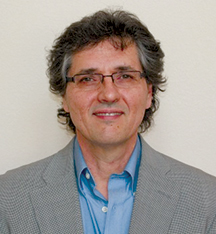
INTERVIEW
Know What’s Happening

L.A. Little, who is a professional money manager trading his own accounts while managing investment funds for qualified investors from his Colorado-based office, is the author of three books (Trade Like The Little Guy, Trend Qualification And Trading, and Trend Trading Set-Ups) and has written extensively for many popular publications such as Active Trader, TheStreet.com, RealMoneyPro.com, MarketWatch.com, Minyanville.com, and Technical Analysis of Stocks & Commodities. He writes daily on his website Technical Analysis Today (www.tatoday.com), which offers services that implement the concepts he espouses. He may be reached at tat@tatoday.com.
Stocks & Commodities Editor Jayanthi Gopalakrishnan interviewed Little on January 5, 2013.
L.A., can you tell us about your background and how you got interested in the financial markets?
I was raised on a ranch in Texas, and that led me to my first experience with the markets. My father had a herd of beef cattle — I don’t remember the exact time, but it was around the autumn of 1973 — and he was trying to figure out the best time to sell his herd. Because of the oil embargo that was taking place at that time, there was a lot of inflation.
The question we faced was, “How do we time the market?” I was fascinated by the idea. Although I didn’t act on that curiosity until much later, that was my first experience with realizing that there was this dynamic system out there where things got priced. And that those with products to bring to market have to try to figure out when is the best time to sell.
We were rudimentary in our approach, and we were absolutely wrong when we sold! But that was my first experience with the market. When I began trading — around 1988 or 1989 — I traded the commodity markets. That was where I tried to make my fortune, so to speak. Being able to leverage your money like you can in the commodity markets and the potential to become a millionaire overnight was enticing. But like most people, I lost my money.
Did that discourage you from trading?
You learn a lot as you go, and if you’re determined enough, you can figure out a way to make it work. So I took the lessons I was taught in terms of leverage and money management, which were not things I understood at first. I understood the technical side, but I didn’t understand those other things. You need all three. You’ve got to be able to manage risk; you’ve got to be able to read the charts — that is, if you’re technical; if you’re fundamental, then you’ve got to be able to read the fundamentals; and finally, you’ve got to understand when to apply leverage and when not to. To me, those are the three key pieces to be successful over time.
I think of a market as a complex system. There are a huge number of inputs, all of which have some sort of a weighting factor.All through your life you learn lessons. I began to develop my professional career when I was an engineer. As an engineer, I learned the discipline of proposing some sort of a thesis, testing that thesis against the real world, adapting it to what you see, reformulating the thesis, and retesting it. That is the scientific method.
I worked for Bell Labs for about seven years starting in 1985, as a software engineer on the large embedded telecommunications systems. There, we had some very complicated systems, and we had to simplify what we were working with. That idea of reductionism and simplification carried throughout my life. It applies to what I do today.
How?
I think of the market as a complex system. There are a huge number of inputs, all of which have some sort of a weighting factor. That factor isn’t a constant; it’s always changing. If you truly want to model the market, you need a very large adaptive model. But I don’t think that’s possible.
So I try to find simplification. I try to find a model that models maybe 80% or 90% or some percentage of that system with a minimal number of inputs and interactions between those inputs. That’s what my work has been about. My second book, The Trend Qualification And Trading, was an attempt to do just that — model the market with the minimal number of inputs and interactions between those inputs that would capture a large portion of what takes place in the market itself.
My process is built around simplifying the market to a model that captures a reasonable representation of what that market is and isn’t doing, and use that to trade.